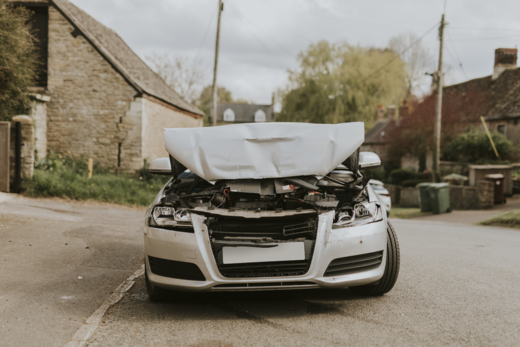In the intricate dance between time and technology, one constant reality for vehicle owners is the unyielding force of depreciation. The value of a car, once driven off the showroom floor, begins its gradual descent, influenced by an array of factors that create a complex interplay in the automotive market. For consumers, understanding the intricacies of vehicle depreciation is not merely an academic exercise; it’s a pragmatic necessity that informs choices about purchasing, maintaining, and eventually selling their automobiles. In this extensive guest post, we embark on a journey through the multifaceted landscape of factors that impact vehicle depreciation, unraveling the layers that contribute to the ebb and flow of a car’s economic value. If you’re considering buying a used car in Florida, it’s essential to enlist the expertise of a mechanic to inspect a used car in Florida, ensuring that you make an informed decision about your investment.
What Is Vehicle Depreciation?
Vehicle depreciation, an oft-overlooked aspect of car ownership, is a nuanced phenomenon that warrants attention. It signifies the gradual decline in a car’s value over time, a reality faced by every car owner as their beloved vehicle logs more miles on the odometer. Unlike other assets, vehicles don’t appreciate; they depreciate. This natural and expected process is influenced by a constellation of variables, each playing a distinct role in shaping the trajectory of a car’s value. From the tangible impact of age and mileage to the intangible sway of market trends and technological advancements, the factors influencing vehicle depreciation are as diverse as the cars themselves.
Age and Mileage
At the heart of vehicle depreciation lies the inescapable influence of age and mileage. Cars, like any tangible asset, experience wear and tear over time, and the odometer becomes a chronological record of a vehicle’s journey. The initial years, often termed the “new car depreciation” phase, witness a more rapid decline in value. The relationship is clear: the older the car, the more miles it accumulates, the faster its depreciation.
Condition and Maintenance
Beyond the chronological markers of age and mileage, the condition of a vehicle emerges as a pivotal factor in the depreciation equation. Regular maintenance and timely repairs become the custodians of a car’s value, slowing down the inexorable march of depreciation. A well-maintained vehicle, with a pristine interior and smoothly operating mechanical components, is likely to retain a higher percentage of its original value compared to its neglected counterparts.
Market Demand and Trends
In the dynamic realm of vehicle depreciation, the economic principles of supply and demand wield considerable influence. Popular models with high demand tend to depreciate at a more languid pace, as they remain sought after in the market. Conversely, less-popular models may experience a swifter decline in value. Market trends, such as the increasing preference for electric vehicles or a shift towards fuel-efficient cars, have a transformative effect on the depreciation rates of different vehicle types.
Technological Advancements
The relentless march of technology has a profound impact on the automotive landscape, shaping not only the driving experience but also the rate of vehicle depreciation. The introduction of new features, safety technologies, and infotainment systems can render older models outdated, accelerating their depreciation. The modern consumer’s penchant for the latest innovations underscores the importance of staying abreast of technological advancements in understanding the depreciation dynamics.
Environmental Considerations
In an era marked by growing environmental consciousness, considerations of sustainability and fuel efficiency play a significant role in influencing vehicle depreciation. Traditional gas-guzzlers may experience higher depreciation rates compared to their eco-friendly counterparts. The push towards electric vehicles and environmentally conscious transportation choices has the potential to redefine the depreciation landscape, making it imperative for consumers to align their choices with evolving environmental considerations.
What Is a Diminished Value Claim?
In the intricate tapestry of vehicle depreciation, a term that often surprises car owners is the “diminished value claim.” This claim spotlights the reduction in the resale value of a repaired vehicle, even after it has been meticulously restored to its pre-accident condition. In simpler terms, a car that has undergone repairs following an accident may still be perceived as less valuable in the eyes of potential buyers. Understanding this concept is pivotal, as it has a direct bearing on the overall depreciation trajectory of a vehicle.
For a more in-depth exploration of how diminished value claims can impact your vehicle’s depreciation and guidance on navigating such scenarios, read our comprehensive article on “What Is a Diminished Value Claim?”.
Economic Factors and Inflation
Zooming out from the microcosm of individual vehicles, broader economic factors and inflation cast a looming shadow on vehicle depreciation. Economic downturns, fluctuating interest rates, or variations in fuel prices can sway consumer spending patterns, directly impacting the demand for specific types of vehicles. In times of economic uncertainty, consumers may gravitate towards more affordable and fuel-efficient models, thereby influencing the depreciation rates of larger or less fuel-efficient vehicles.
Vehicle History and Reputation
A vehicle’s history and reputation are indelible imprints on its depreciation journey. Cars with a clean history, devoid of accidents or major repairs, generally depreciate at a more gradual pace. Conversely, vehicles with a questionable history, such as those involved in accidents, flood damage, or significant mechanical issues, may experience accelerated depreciation. The overarching brand reputation also plays a substantial role, influencing the resale value of a vehicle across its lifecycle.
Vehicle depreciation, a relentless force that shadows every car on the road, is a nuanced and multifaceted phenomenon. As consumers, the choices we make, from the initial purchase to regular maintenance and eventual sale, are intricately woven into the fabric of depreciation dynamics. From the tangible aspects of age, mileage, and condition to the intangible influences of market trends, technology, and environmental considerations, the factors affecting vehicle depreciation paint a complex portrait. The understanding of these factors empowers car owners to make informed decisions, ensuring that their journey through car ownership is not only enjoyable but also financially prudent. As the automotive industry continues to evolve, staying informed about the factors influencing vehicle depreciation becomes a cornerstone of automotive literacy. In this dynamic landscape, where every mile adds to the narrative of a vehicle’s story, knowledge becomes the compass that guides us through the twists and turns of the road ahead.





